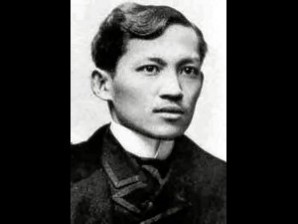SAN PEDRO, Laguna—In one of the oldest and largest cemeteries in Metro Manila, the dead crowd with the living.
Space is running out in Manila North Cemetery that the relatives of national hero Dr. Jose Rizal had no recourse but to have the remains of his sister, Narcisa Alonso Rizal, and her family exhumed and transferred to Laguna province after more than 70 years.
“We try to avoid the crowd by visiting a day after [the observance of the All Souls’ Day], but Manila North Cemetery is still too crowded and rowdy,” said Jose Rizal Lopez II, an 89-year-old Rizal descendant.
At his age, he said, he could no longer bear the crowd.
Ester Lopez-Azurin, 60, a great-grandniece of Rizal, recalled a visit they made to the family’s mausoleum in Manila when they found folding beds and transistor radios left behind by squatters.
“You could not even finish [reciting] one ‘Our Father’ without being disturbed by people offering services to sweep the tombs,” she said.
Without much fanfare, the Rizal clan on June 8 had the bones of Narcisa exhumed, cremated and transferred to the General Paciano Rizal Shrine in Los Baños, Laguna, on June 15 and 16.
Also exhumed and transferred from Manila North Cemetery were the remains of seven other family members: Narcisa’s husband Antonino Manapat Lopez and their three children Emilio, Consuelo and Antonio; Antonio’s wife Emiliana Dacena Rizal; and their two sons Francisco I and Jose I.
Emiliana was the daughter of Paciano, the national hero’s only brother, with Severina Dacena. She was married to Antonio, her first cousin.
The family would have wanted a simple, private burial, but the National Historical Commission of the Philippines (NHCP) suggested a more elaborate reinterment, complete with a vigil and procession from the Rizal Shrine in Calamba City to Los Baños on June 16. The NHCP also scheduled the reinterment in time for the 152nd birth anniversary of the national hero on June 19.
Simple man
“We wanted it simple, just as my grandfather was—very low-profile,” Lopez said of Paciano. Lopez is a son of Emiliana and Antonio, making him a direct descendant of both Paciano and Narcisa.
After the revolution, Paciano lived a quiet life as a farmer in Los Baños until he died in 1930. His remains and those of his two other sisters, Josefa and Trinidad, were reinterred at the General Paciano Rizal Shrine in 1988.
“Very little was written about him and very few knew that he was responsible for so many things,” Lopez said, citing the elder brother’s support for Rizal’s education abroad.
Lopez said his siblings remembered their grandfather looking out from his home’s balcony, admiring the lights in Calamba.
They also remember a stingy Paciano who, whenever he visited his siblings in Manila, would demonstrate how strict he was about spending by objecting to being served several viands, Lopez said.
Narcisa, on the other hand, was the supportive sister who wrote Rizal news about the family and the country during the hero’s travels and exiles. One story was that Narcisa was the one who found the grave of Rizal in Paco, Manila. She carried a marble slab with Rizal’s initials “RPJ” and bribed a caretaker at the cemetery to mark her brother’s grave with it.
The General Paciano Rizal Shrine remains a private property of the Lopezes, although visits can be arranged with the family.
“We want to keep a personal touch to it,” Lopez said, noting that his parents and grandparents’ remains would now be better taken care of in the private shrine.
Professor Dwight Diestro, University of the Philippines Los Baños Social Science Department chair, said the transfer of the remains could ensure the “continuity” of the family’s traditions, although he would rather that the heroes’ graves become more accessible to the public.
“Families should offer their children to the nation,” he said.
First posted 10:10 pm | Saturday, June 22nd, 2013
